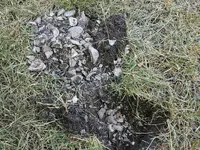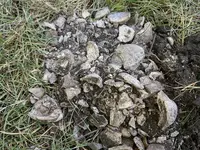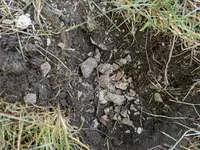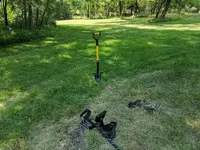mburnsgps
Full Member
- Joined
- Jan 14, 2017
- Messages
- 159
- Reaction score
- 178
- Golden Thread
- 0
- Location
- New Jersey
- Detector(s) used
- Minelab Equinox 800, Nokta Invenio Pro, Whites V3i, Nokta Simplex, Garrett AT Max
- Primary Interest:
- All Treasure Hunting
I was detecting and going after a high tone when i came across this buried shell pile. It's extremely tough digging because of the density of the shells.
The pile was found near a former 19th century farmhouse that was demolished about 15 years ago.
I would like to know more about buried piles like these and what they mean to detectorists.
Is this common for 19th century farmhouses? Is this more common for colonial sites?
Any help would be appreciated.
thanks
mike




The pile was found near a former 19th century farmhouse that was demolished about 15 years ago.
I would like to know more about buried piles like these and what they mean to detectorists.
Is this common for 19th century farmhouses? Is this more common for colonial sites?
Any help would be appreciated.
thanks
mike




Amazon Forum Fav 👍
Last edited:
Upvote
5




